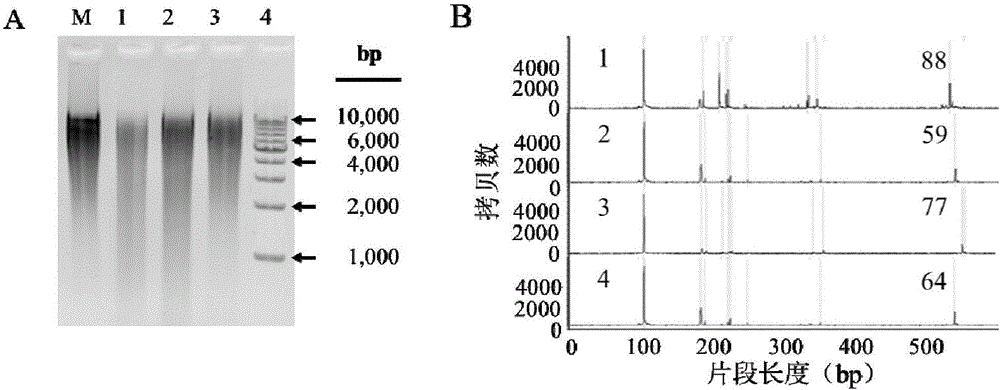Extracting method of cellulose degradation flora metagenome
A technology of cellulose degrading bacteria and cellulose decomposing bacteria, which is applied in the field of metagenomic extraction, can solve the problems of interference, affect bacterial extraction, increase the difficulty of DNA extraction, etc., achieve easier release, ensure repeatability, and ensure integrity Effect
- Summary
- Abstract
- Description
- Claims
- Application Information
AI Technical Summary
Problems solved by technology
Method used
Image
Examples
Embodiment 1
[0064] Example 1, Metagenome Extraction of Cellulose Degrading Bacteria
[0065] 1. Screening of natural cellulose degrading bacteria
[0066] 1. Selection of cellulose degrading bacteria
[0067] With the lignocellulosic raw material of 10g / L (Sigma company PH-101 (Cat. No. 11365) and 5g of soil samples collected in cellulose-enriched areas were added to the flora-enrichment medium and cultured at 30-65°C. Through continuous subculture, bacteria with stable cellulose conversion ability were selected. The group is the bacterial group that stably degrades the lignocellulosic raw material.
[0068] The stability index of the cellulose-converting ability to stabilize the flora is to ferment the lignocellulosic raw material and the flora in the flora-enriched medium for 3 days, and detect the degradation rate of the lignocellulose raw material every day. If the lignocellulose raw material degrades in 3 days The rate is basically unchanged, which is to stabilize the flora for t...
Embodiment 2
[0086] Embodiment 2, adopting existing kit to extract metagenomic DNA of saliva sample (comparative example)
Embodiment 4
[0131] The metagenomic DNA that embodiment 4, embodiment 1 and embodiment 2 extract compares
[0132] 1. Concentration and purity testing
[0133] The metagenomic DNA concentration and purity (indicated by OD260 / 280) extracted in Example 1 and Example 2 were measured respectively by Nanodrop (Thermo Fisher Scientific, model Nanodrop2000c), as shown in Table 1, and detected by agarose electrophoresis DNA concentration and integrity.
[0134] Table 1 compares the concentration and purity of extracted DNA
[0135]
[0136] It can be seen from Table 1 that the metagenomic DNA obtained by the method provided by the present invention for extracting natural cellulose utilizing flora is significantly improved in terms of concentration and purity compared with the metagenomic DNA obtained by the kit method.
PUM
 Login to View More
Login to View More Abstract
Description
Claims
Application Information
 Login to View More
Login to View More - R&D
- Intellectual Property
- Life Sciences
- Materials
- Tech Scout
- Unparalleled Data Quality
- Higher Quality Content
- 60% Fewer Hallucinations
Browse by: Latest US Patents, China's latest patents, Technical Efficacy Thesaurus, Application Domain, Technology Topic, Popular Technical Reports.
© 2025 PatSnap. All rights reserved.Legal|Privacy policy|Modern Slavery Act Transparency Statement|Sitemap|About US| Contact US: help@patsnap.com


